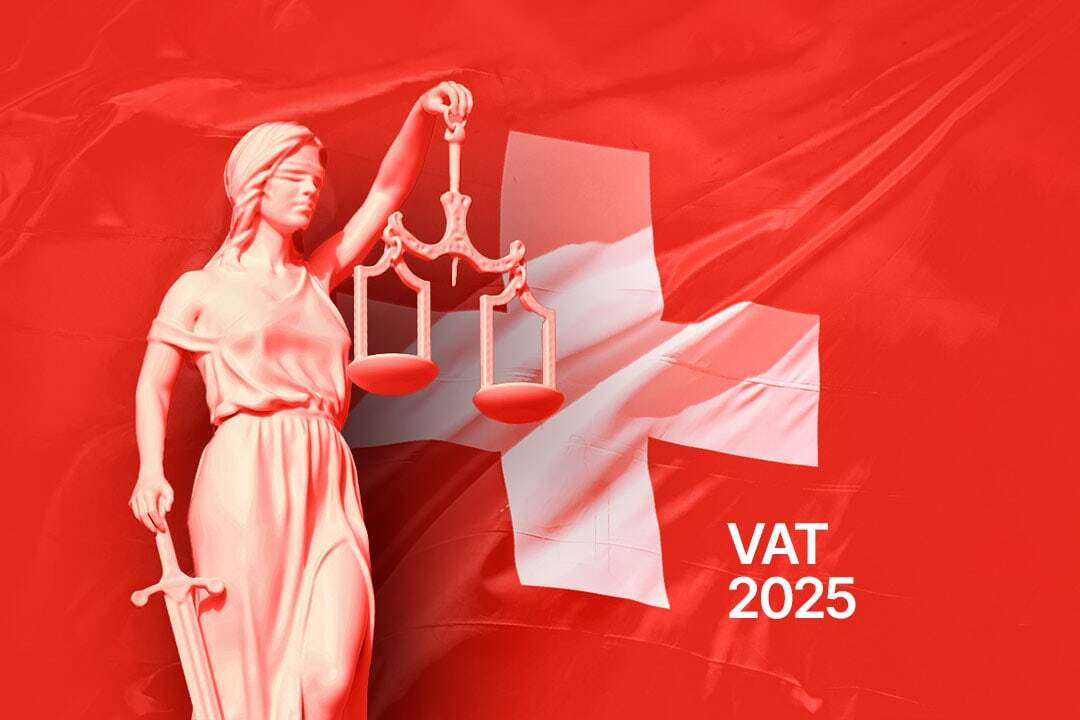Opportunities and tips for online retailers
Shipping to the Netherlands
Why the Dutch market is worthwhile for online retailers

Why the Dutch market is worthwhile for online retailers
The Netherlands is a hotspot for e-commerce: consumers have a high purchasing power and are highly digital, and cross-border purchases are well established. If you want to sell successfully, you should make sure that shipping to the Netherlands is set up with a local delivery experience, tax-compliant processes and streamlined returns.
In this article, we show you how this works with exporto and what exactly makes the Dutch market so attractive – including tips for retailers.
What makes the Dutch market so attractive
Anyone looking for exciting target markets for e-commerce today would be well advised to consider the Netherlands. The country is small, highly digitised and has had one of the highest online purchase rates in Europe for years. The value of the Dutch e-commerce industry has been estimated at EUR 36 billion for 2024 – an increase of five per cent over the previous year. Online retail currently accounts for a good 32 per cent of total retail sales in the Netherlands (source: ecommercenews.eu).
High purchasing power despite small population
With around 18.3 million people and a very high purchasing power of EUR 27,558 per capita on average (as of 2024), the Netherlands is one of the top e-commerce markets in Europe – despite its comparatively small size.
Internet use and online shopping in everyday life
According to Datareportal, almost all Dutch people (99 per cent) have access to the internet, and 81 per cent of the Dutch population aged 12 and over had shopped online by 2024. This equates to around 17.5 million potential customers.
Openness to international providers
Particularly interesting: cross-border shopping is well established in the Netherlands. Around 12 per cent of online sales come from purchases made in foreign shops. In 2024, Germany was the second most popular market of origin after China, accounting for 23 per cent of sales.
Lively purchasing behaviour with high order frequency
Purchasing behaviour also speaks in favour of market entry: although average shopping baskets are in the European mid-range, order frequency is high. Categories such as fashion, consumer electronics, drugstore items, and home & garden products are in particularly high demand. The most popular platform in Dutch e-commerce is bol.com, followed by marktplaats.nl and amazon.nl. Specialised providers such as coolblue.nl, ah.nl and Zalando are also among the favourites.
Overall, the Dutch market has three attractive features for e-commerce: high purchasing power, digital maturity, and an openness to international providers. Therefore, if you adapt your product range and shipping to local expectations, you will reach a large digital audience actively seeking international offerings.
Shipping to the Netherlands: Important basics
To succeed in the Dutch e-commerce market, retailers must understand what customers expect and consistently deliver on these expectations. This includes, above all, providing a familiar delivery experience, offering a smooth returns process and the right payment methods, and being aware of tax and cultural peculiarities.
1. Provide the familiar delivery experience – with PostNL
When shopping online, delivery is often the decisive moment in the customer journey. While price and product selection are key factors in the initial purchase, long-term customer satisfaction regularly depends on whether the parcel arrives in the Netherlands reliably and on schedule.
Dutch shoppers prefer to use PostNL. As the market leader in parcel delivery, the company enjoys a high level of trust. Parcels usually reach their destination on the first delivery attempt – if the recipient is not at home, the parcel is usually left with neighbours or deposited at one of the numerous PostNL collection points.

With exporto, you as a retailer benefit from this reliability and the trust that the brand enjoys, without having your own carrier contract or integration costs: we feed shipments directly into the PostNL network. Customers thus experience the familiar local delivery service – while you save time, money and complexity.
2. Process returns easily and efficiently – without additional effort for retailers
Although the return rate in the Netherlands is not unusually high, smooth return processes are crucial. When Dutch customers decide to return an item, they expect the process to be particularly smooth.
They attach great importance to simple return processes via local addresses, transparent conditions and quick refunds – key factors in purchasing decisions and customer satisfaction.
With exporto, returns processing is simple and seamless:
- Customers conveniently drop off their returns at one of the numerous PostNL branches or parcel shops.
- All returns are bundled in the central exporto returns mailbox at PostNL and returned daily to the domestic exporto cross-dock.
- exporto then forwards the returns to the retailer's original warehouse.
Optional content checks are available – a decisive added value for many retailers. Each return is checked for completeness (quantity). As soon as the returns arrive at the returns warehouse, exporto can report which items have arrived via CSV. This saves valuable time and creates transparency even before the returns are physically back in the original warehouse.
This can make all the difference, especially for platform customers: tight SLAs require returns within a few days (e.g. a maximum of four days). With early content checks, you can meet these requirements more easily – and also ensure better visibility and rankings on the platforms.
Overall, this means: no separate returns warehouse, no individual processing with PostNL, no additional effort. Everything is handled from a single source. And for your customers, the returns process is as simple as they are used to from their home market.
3. Offer locally popular payment methods
The payment method you offer at checkout is just as important as shipping and returns processing. Customers expect to see familiar options here. While purchase on account and PayPal dominate in Germany, consumers in the Netherlands prefer to use iDEAL – the online payment system of Dutch banks (according to ecommercenews.eu). The payment is processed directly via the customer's own bank account and confirmed immediately.
PayPal, MasterCard and VISA are also used. “Buy now, pay later- offers such as Klarna or riverty are also becoming increasingly popular. However, without iDEAL at checkout, a shop often seems incomplete to Dutch customers.
Therefore, we recommend verifying whether your shop supports the most common local payment methods. Ideally, integrate iDEAL prominently in the checkout process as the first option. Additionally, offering common alternatives such as credit cards, PayPal and Klarna will cover most customer needs.
4. Consider cultural differences
Even though the Netherlands is part of the EU single market, there are cultural nuances that e-commerce retailers should be aware of:
- Consumer rights: A 14-day right of withdrawal is standard in the Netherlands – return processes must reflect this.
- Communication: Dutch consumers are price-conscious and expect clear information on shipping conditions and transparent tax information (more on this later) at checkout.
- Customer service: English is usually sufficient for customer service – the Netherlands ranks first in the EF English Proficiency Index, with 90 per cent of Dutch people proficient in the language. However, including Dutch text elements in individual communications, such as emails with shipping confirmations or links to shipment tracking, can increase trust and professionalism.
5. Make shipping costs clear and transparent
Dutch consumers are considered to be price-conscious. Unclear or unexpected shipping costs are a common reason for abandoned purchases. Retailers who openly and clearly communicate these costs build trust and improve conversion rates at checkout.
Simple models such as free shipping above a certain order value or clearly communicated flat rates are popular. It is not so much the amount of the costs that is decisive, but rather the transparency.
With exporto, retailers benefit from bundled volumes and stable conditions – without having to negotiate their own rates or make time-consuming price comparisons.
Tax requirements: VAT rates, OSS procedures, and delivery thresholds
If you sell to the Netherlands, you need to have more than just shipping under control. Tax processing also needs to be set up correctly – otherwise, growth can quickly turn into a risk. We show you which VAT rates apply and when sales in the destination country are subject to tax.
VAT rates in the Netherlands
There are two relevant VAT rates in the Netherlands:
- 21 percent standard (e.g., for fashion, electronics, household goods)
- 9 percent reduced (e.g., for books, medicines, certain foods)
Products must be classified correctly and the respective tax rates must be stored at checkout. Customers expect transparency here – incorrect or non-transparent tax information quickly leads to abandoned purchases.
Delivery threshold and One-Stop-Shop (OSS)
Since 2021, there has been a uniform delivery threshold of €10,000 net per year for B2C distance sales in the EU.
- If cross-border sales are below this threshold, they are generally still taxed in the country of origin.
- However, if the total value of all cross-border distance sales in the EU exceeds this threshold, the sales must be taxed in the destination country – for example, the Netherlands – at the applicable rates.
To avoid having to submit separate registrations and tax returns in each country, there is the OSS (One-Stop-Shop) procedure. This also applies to the Netherlands. Traders report their EU-wide B2C sales centrally to the Federal Central Tax Office (BZSt). The amounts are then distributed from there to the respective countries.
Specifically, this means:
- Transparency at checkout: Customers can immediately see that the tax is being calculated correctly, which builds trust.
- Legal certainty: With OSS, you can fulfill your tax obligations efficiently and avoid unnecessary duplicate structures.
- Growth without obstacles: If you use an OSS-compliant setup from the outset, you can easily tap into new markets without having to start from scratch each time.
With exporto, you are on the safe side: our shipping processes are OSS-compatible, and we provide you with all tax-relevant data so that it flows seamlessly into your systems. This ensures that your processing is compliant, efficient and scalable right from the start.
Further information on the OSS regulation is available on the website of the Federal Central Tax Office.
Scalable shipping, even beyond the Netherlands – with exporto
For many retailers, the Netherlands is a good starting point for European cross-border business. In practice, however, it rarely stays at just one market. Once the structures are in place, retailers usually want to expand into other countries – ideally without having to manage separate carriers, contracts or integrations for each new market.
This is precisely where exporto's strength lies:
- One connection, many markets: with a single setup that can be easily expanded, you can tap into other key European markets such as Austria, Switzerland or the United Kingdom after the Netherlands – efficiently, transparently and without much additional effort.
- Synergies through volume bundling: By combining shipments from multiple markets, we can offer more stable shipping costs and better terms. For you, this means greater planning security and a higher margin per order. At the same time, your operational costs will be significantly reduced. All parcels for different markets can be delivered unsorted – exporto takes care of central control and distribution. This optimises delivery times and greatly simplifies internal processes.
- Centralised control, local experience: With exporto, you have a single point of contact who manages all processes for you – from shipping to returns, across all markets. This means you don't have to coordinate different carriers or service providers, but can work with a clear setup. For your customers, it feels like a local shopping experience in every market – in the Netherlands with PostNL, elsewhere with the preferred carriers.
- All data at a glance: The exporto customer portal gives you insight into all data and processes at any time, allowing you to analyse them and actively optimise the performance of your markets.
Conclusion: Start in the Netherlands now – grow across Europe
The Netherlands is one of the most exciting target markets in European e-commerce thanks to its high purchasing power, near-complete internet penetration, and openness to international providers.
It is crucial to address your customers' expectations correctly from the outset, offering reliable delivery with PostNL, a simple returns process, familiar local payment methods, and correct tax handling via OSS.
With exporto, you can rely on an end-to-end solution that combines logistics, returns and tax compliance – and can be flexibly rolled out to other markets. This means that a successful start in the Netherlands lays the foundation for sustainable e-commerce growth throughout Europe.
About the Author

Katharina Knoop
As Senior Marketing Manager for exporto GmbH, Katharina Knoop is coordinating the planning, production and publication of content relating to all aspects of cross-border e-commerce for over 3 years.
Subscribe to our newsletter
Get the latest posts and updates straight to your inbox.
Related Posts
Market information and tips on taxes, payments and returns management for shippi...
9 minute read
Opportunities and strategies for German online retailers
3 minute read
This allows British online retailers to tap into the German e-commerce market wi...




Comments